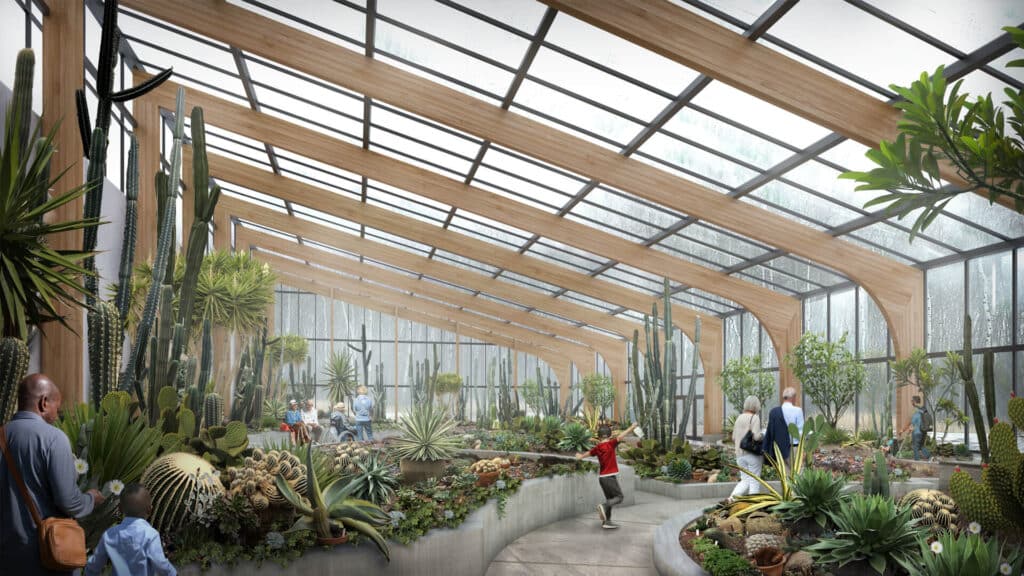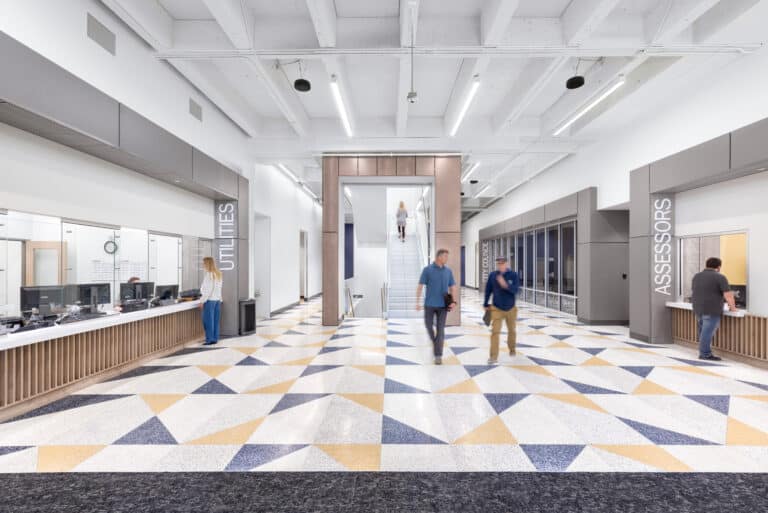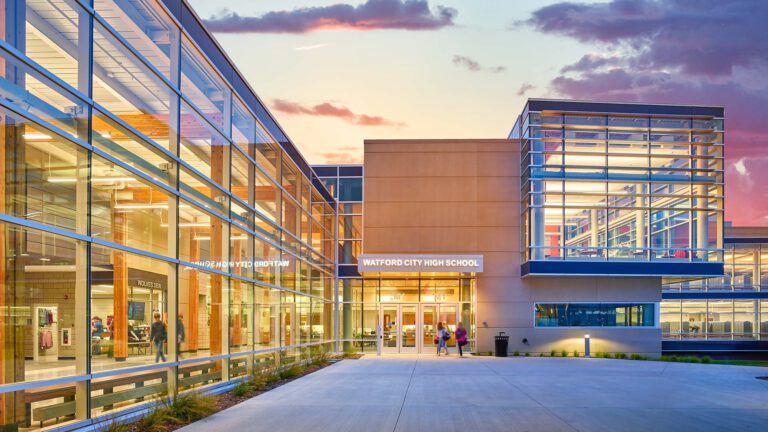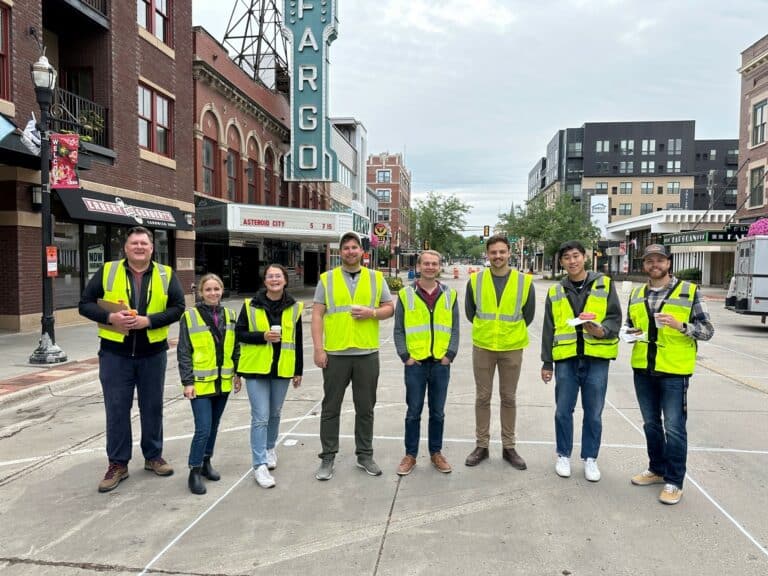Since the concept of green buildings was introduced, many architecture firms have operated with what Patrick Thibaudeau, Assoc. AIA, principal sustainability officer at JLG Architects, has dubbed the “syrup syndrome.” Thibaudeau remarked during the second session of A’21 that many firms currently “design a building like a stack of pancakes. Then a specialist gets called in to pour on the sustainability syrup and make the building sweet. We really want to end that and think about mixing sustainable designs into the batter from the beginning.”
Architects are ready to move beyond “random acts of sustainability.” And with buildings responsible for 40% of all CO2 emissions, the impact the industry could have on stemming climate change is great. Some high-performing firms are re-thinking how the organizational culture and systems within their practices can make a widespread impact. Yet others don’t know where to start.
Designing a sustainable practice
Architects at their core are problem solvers. They work daily to address the challenges that clients, engineers, urban planners, and more, throw their way. So, when it comes to changing the fundamental way a firm operates, where does one start?
Unlike other initiatives, core business changes need support across the firm. “It really is important to have a commitment expressed by the executive team and supported at every level of the organization,” said Thibaudeau. “That cultural embracement must also include significant process support. It’s easy to make some kind of declarative, but until it’s an ‘every project and each person’ experience, real action won’t occur.”
Once that commitment is made, many high-performing firms began the process by defining sustainability, according to Sandra Montalbo, Assoc. AIA, PhD student at the University of Texas at San Antonio. “You have to define what sustainability means for you and your firm, then identify how you’re going to align your core values with your sustainability mission.” Through her research, Montalbo also found that high-performing firms leverage resources, like the tools and programs available via AIA’s 2030 Challenge and the Sustainable Performance Institute’s Roadmap to Continuous Improvement.
This radical shift in operating must impact how firms deliver on projects, while ensuring alignment with their new goals. Barbara BatShalom, Assoc. AIA, executive director of the Sustainable Performance Institute (SPI), recommends spending some time deconstructing and redesigning your project delivery methodology. “The benefits of this exercise are really far- reaching in terms of helping you both align your process and engage conversations across your firm.” From there, BatShalom suggests thinking about how you can institutionalize the use of feedback loops. “Implementing feedback loops during and after the design process will help firms learn from their projects, allowing them to continuously improve. If you’re not always improving, essentially you’re selling your clients your past mistakes.”
Integrating sustainability across the board
One differentiator of firms with success in achieving their sustainability goals is that sustainability is integral to everything they do. Green solutions are not an “add on” requested by clients, but an essential component to every design. While this might seem progressive, architects lead with this perspective on a variety of fronts.
“You don’t go to a client and say, ‘do you want your project to be ADA compliant?’ or ‘do you want your building to be beautiful?’” said Montalbo. “Of course, one project might focus on energy efficiency, and another might emphasize water, but the baseline expectation is that we’re going to create and design high-performance buildings that are more sustainable and more efficient.”
One critical element of making this mentality actionable is providing employees with the proper tools they need make it happen. “At JLG, every project gets an energy model, and every energy model has a net-zero, energy design option,” remarked Thibaudeau. “We keep equipping our teams with tools and the information, or vocabulary, required to talk with clients. Some clients don’t want to hear the word ‘sustainability’ because it has so many connotations. But if you talk to them in terms of energy savings, water savings, or my favorite is lowest total cost of ownership, that usually gets everyone’s attention because they all understand a dollar.”
Embracing sustainability internally
Engaging with employees about sustainability goals and giving them the tools, and processes, necessary to execute them is certainly a start. But to truly level up and build an exceptional sustainable practice, firms must walk the talk internally.
“People believe what they see in the halls, not what’s written on the walls,” said BatShalom. “When leadership says ‘sustainability,’ but then the tangible evidence of that doesn’t exist, that sends a very strong message.” Putting their own client recommendations into internal action is frequently a struggle for consulting firms across industries. But when companies take the leap of tying policies directly to their sustainability initiatives, achieving those goals becomes infused in their culture.
“I’ve seen firms provide economic incentives. For example, to demonstrate a firm’s commitment to reducing car emissions, employees who chose not to drive would receive the $300 it cost to lease out the space,” said Montalbo. “It’s important to be truly sustainable, not just in your designs, but also in your operations. You hear about paper towel or plastic container bans in offices. While they may seem small, those practices have a significant impact on the culture and change the way that designers approach design. If you’re coming into a firm that prioritizes these things, it really does, slowly over time shift, shift the culture in a more positive, more sustainable direction.”
Transforming the built environment from a major contributor of greenhouse gas emissions to a central solution to the climate crisis will require an all-hands-on-deck approach by the architecture profession. And it starts with each firm doing their part.





